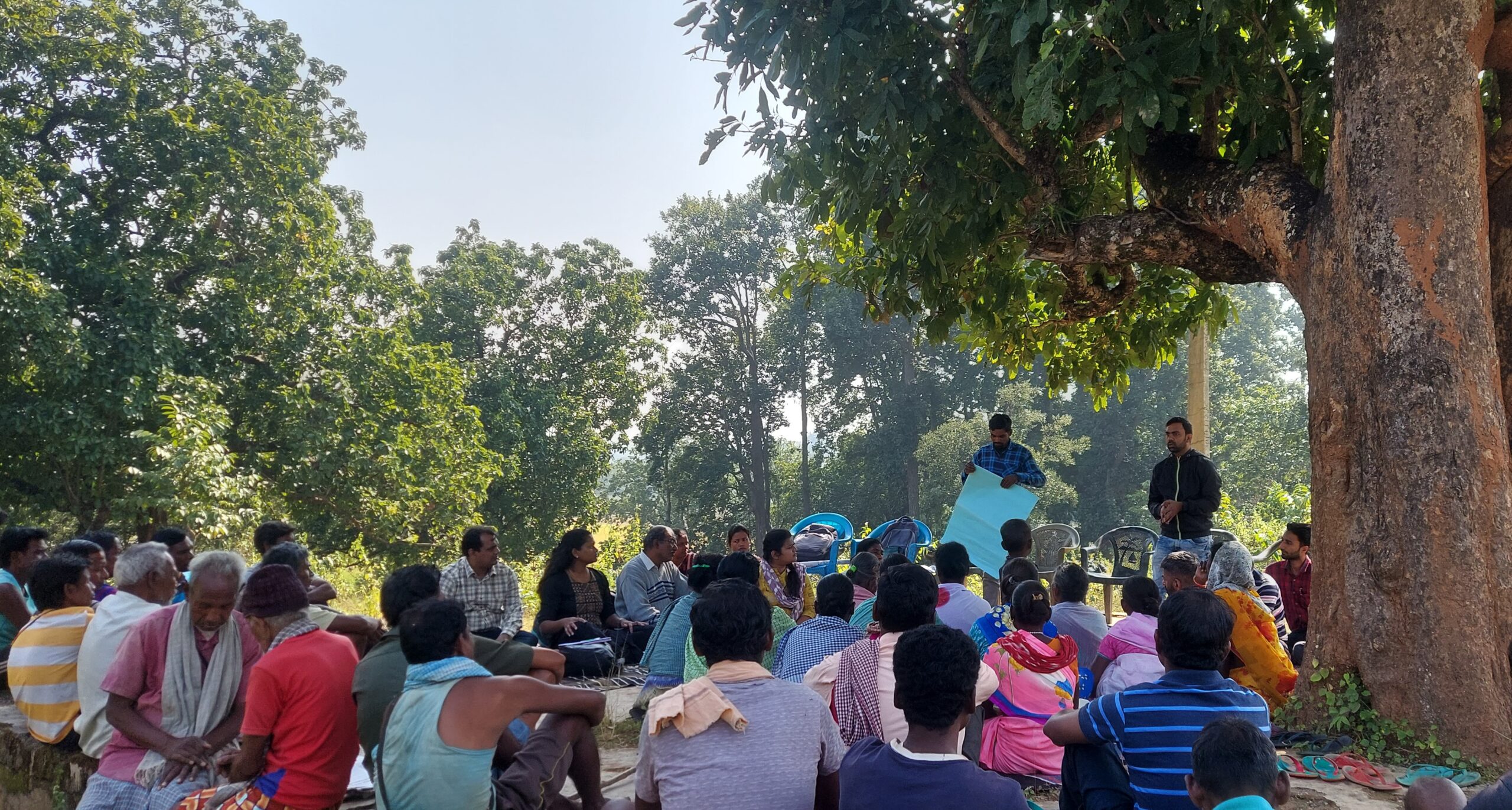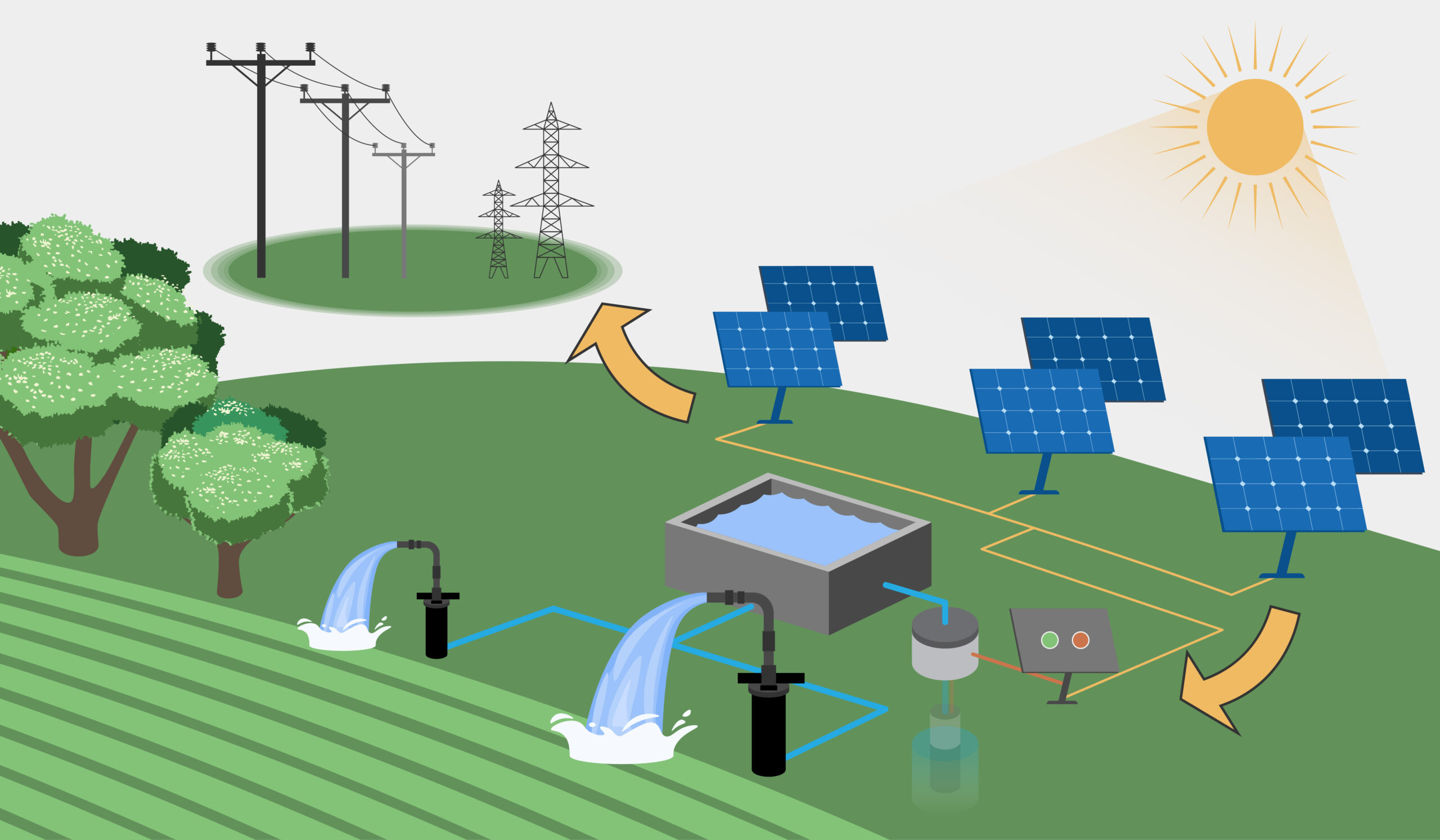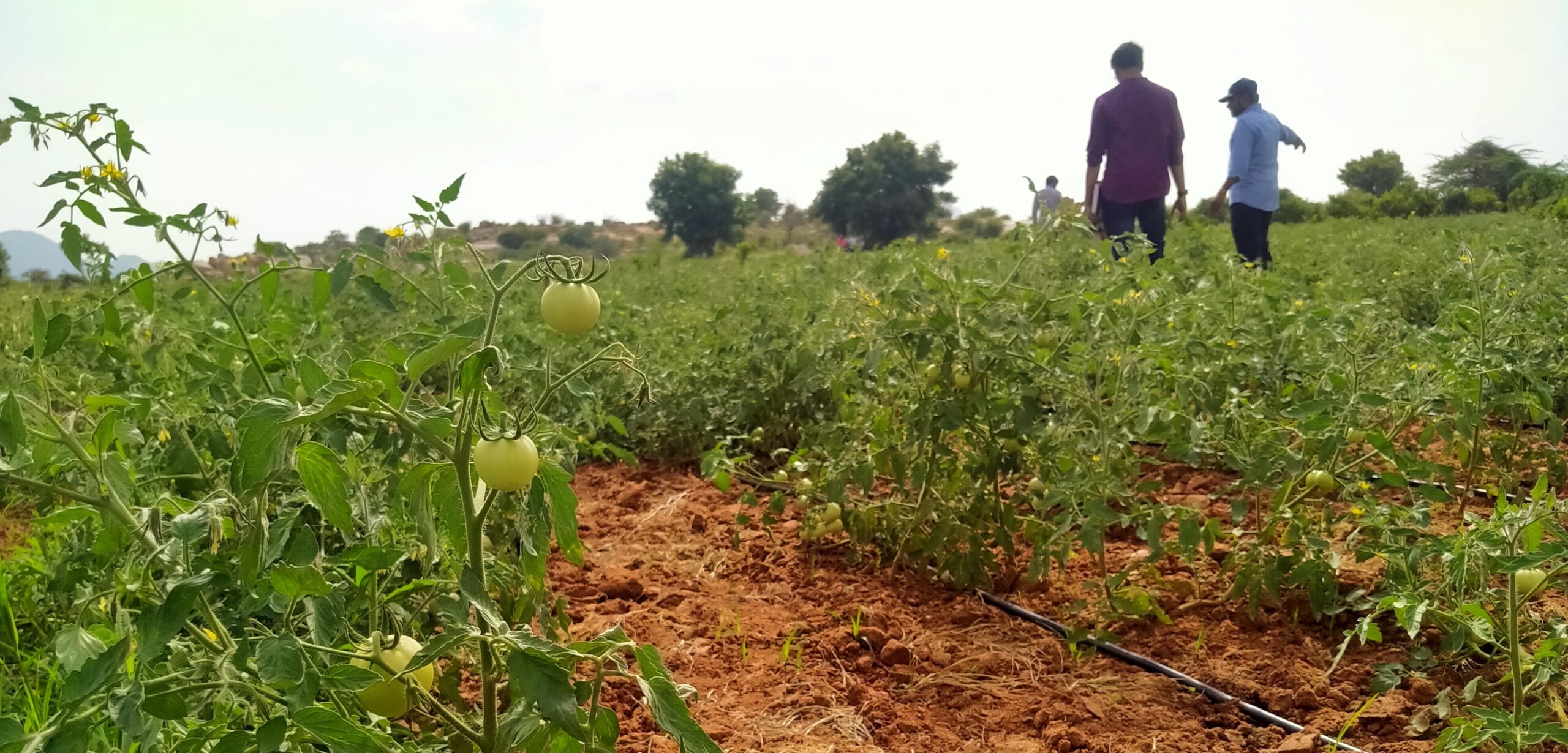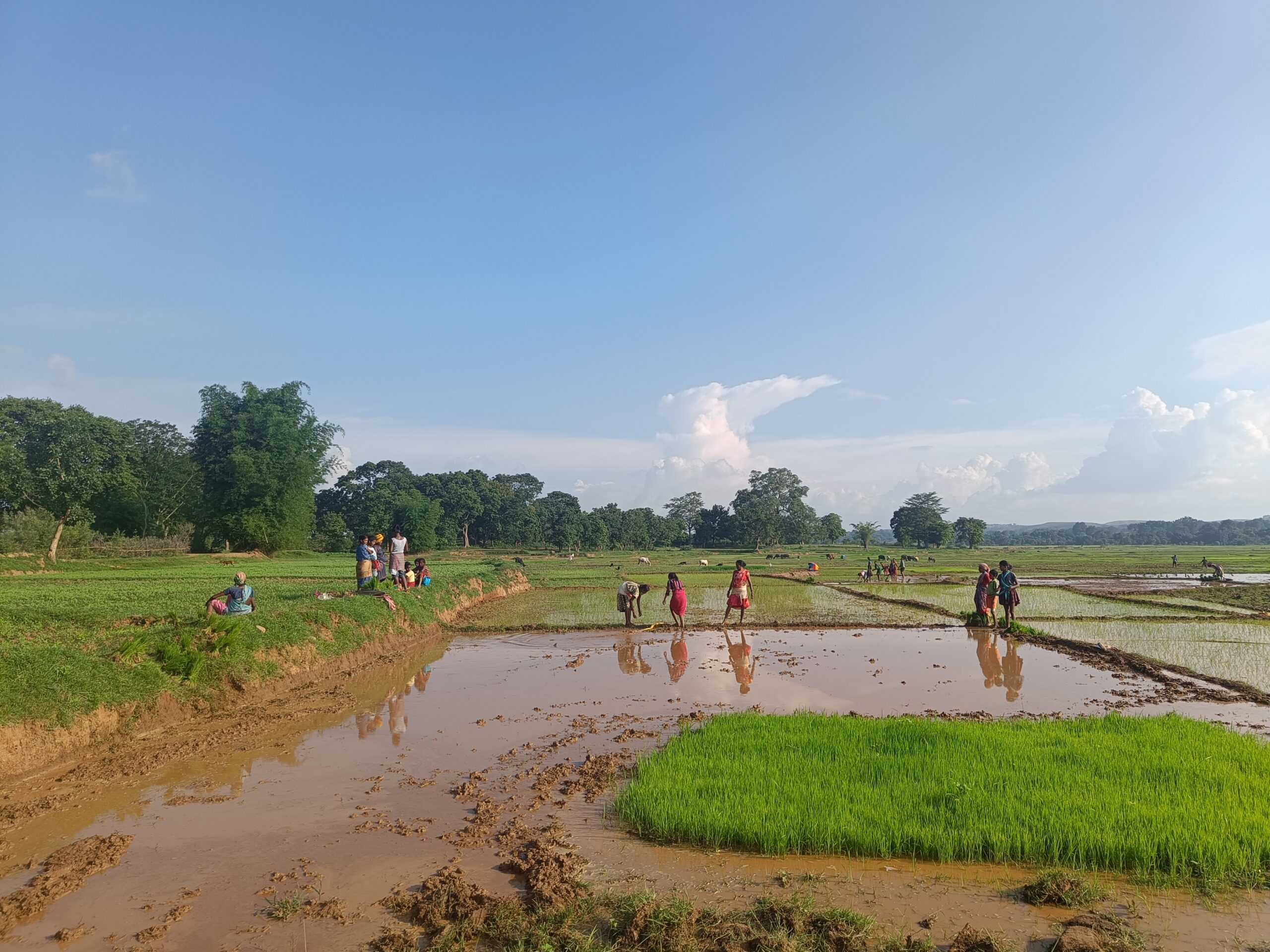Lessons from Netflix Matchmaker ‘Sima Aunty’ for Nonprofits
The Green Rural Economy team in discussion with staff at the Development Support Centre’s field office in Mehsana, Gujarat regarding how solutions such as well monitoring and water budgeting function at the community level. Photo by Gargi Anand
Nonprofits often struggle to find effective solutions to grassroots challenges due to their limited time and resources. To aid them in their search, the Green Rural Economy (GRE) initiative conducts research, spreads the word on online forums and social media, channels donor and partner networks, and participates in networking events. These help connect an organisation looking for a solution to another that can provide it.
A pop culture analogy would be ‘Sima aunty’ of Netflix’s Indian Matchmaking. While neighbourhood matchmakers might tap into the local grapevine, provide cursory information, and leave the two parties to figure things out for themselves. Sima aunty dives deeper, draws on a wider network, maps out preferences, and handholds both parties through the initial stages. Like her, the Green Rural Economy team is an involved matchmaker between development-sector organisations.
This has three components: the demand side, the supply side, and the matchmaking side.
1) The demand side: ‘Surfacing’ of requests for solutions
People are not always comfortable asking for help. Sometimes, the seeker might not even be sure of what exactly they need. For example, a small-time farmer in Guwahati, Assam might feel that mushroom farming could help their family income. But do they have a full picture of the market demand in that geography? The Green Rural Economy team does some probing and analysis to help organisations make suitable requests.
There are two parts to this: trust building and demand curation.
a) Trust building
For effective collaboration, both the solution seeker and provider should feel secure in their interactions. Destigmatising the act of asking for help is essential for the solution seeker. The solution provider needs to be taken seriously and be assured that the seeker is coming to them with genuine interest and will give them due credit. This can encourage more open and effective exchanges.
b) Demand curation and discovery
Digital channels like LinkedIn and donor networks are valuable, but the most effective lead generation in the sector occurs through offline interactions within the framework of ‘sandboxes’ (A sandbox is a small and contained site for safe experimentation. This framework has gained popularity across sectors because it allows for the testing of new ideas and approaches). Such in-person engagements cultivate trust and facilitate discovery.
Also Read | The Odisha Sandbox: Advancing the Green Rural Economy through a Place-Based Approach
2) Matchmaking: Connecting solution providers to solution seekers
The Green Rural Economy team is exploring two main channels for matchmaking:
a) Clinics
In an online clinic, practitioners can seek professional advice from an expert for a specific problem. Green Rural Economy facilitates interactive Q&A clinics to make solutions accessible cheaply and conveniently.
b) Field schools
These are training and engagement sessions held on the field, allowing practitioners to observe, analyse, and implement solutions in person. The participants get hands-on experience rather than theoretical instruction. As experts in their own right, solution seekers can make the exchange more fruitful with their knowledge and experiences. Sometimes, field schools might involve repeated interactions over a cropping season or year to comprehensively address challenges.
While we have visited and documented field schools organised by our partners, we have not yet conducted them under the Green Rural Economy initiative.

Farmer field schools, known as Aajeevika Pathshala, serve as centres for knowledge transfer. This one is run by Ajeevika Sakhi in Ghat Bas village, Alwar district, Rajasthan. Photo by Gargi Anand (The image has been edited to conceal the identity of children)
3) The supply side: Curation of solutions by providers
The supply side, that is, solution providers and experts, must communicate their knowledge effectively. Green Rural Economy helps them document and disseminate their insights. This includes:
a) Translating knowledge into solutions
Organisations working on an issue have immense knowledge, but it is often not documented. Green Rural Economy supports organisations in transforming this tacit knowledge into practical solution manuals by developing user-friendly guides and identifying clear use cases.
Also Read | Downloading the Expert’s Brain: How to Decode Knowledge and Encode it into Solutions
b) Curating and contextualising knowledge
A vast number of solutions are available from different geographies, making it difficult for users to choose the best option. Our digital platform curates solutions from different providers, along with insights on their relevance, simplifying decision-making for users.
Green Rural Economy, a curated matchmaker at scale
Think of the difference between the neighbourhood matchmaker and chatrooms on Reddit or dating apps. In the latter, you don’t need to know someone personally to introduce you to a perfect match. There is a larger pool of people to choose from. But that does mean you have to condense your personality into a few sentences and endure false starts.
Finding solutions for grassroots challenges is somewhat similar. Relying on word of mouth to find the best solution can be expensive and time-consuming, and only benefit a limited number of people. The roster of ‘tried and tested’ solutions in the public domain is sparse. While technology can help scale up this matchmaking, it could also result in a drop in quality. This is where the Green Rural Economy initiative comes in.
Solution seekers and providers need curation, handholding, and facilitation, which we provide. By creating a service provision that helps organisations find solutions, propagate tested solutions to newer contexts, and document their tacit knowledge as guides and playbooks, we can help the development sector become more effective and efficient.
Acknowledgements
This work is supported by Rainmatter Foundation and Axis Bank Foundation.
Edited by Archita Suryanarayanan and Syed Saad Ahmed
Follow us to stay updated about our work






